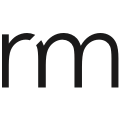The Problem
The usage and active engagement of MyLendingTree’s Cash Flow section was minimal upon release of the initial platform redesign. In order to further engage users, a partnership was reached with Plaid to allow our users to connect to their bank and credit card accounts. This would allow LendingTree to not only have access a user’s real time cash usage but would also allow for additional functionality to be included within the Cash Flow section. As the lead interaction designer on this project, I was tasked with the integration of connecting bank accounts in the MyLendingTree platform as well as designing additional features for users who connected their accounts.
The Process
To start the process, I first wanted to understand how users connected to their bank accounts through Plaid. The overall process was straightforward and did not allow for much customization as it was an API that would be used through their service to connect users to their accounts. Based on this, a competitive analysis was done for other financial companies who had been using Plaid. The focus of the analysis was the initial steps and screens that enticed users to provide their bank account information as well as the different features that were given once a bank account was provided. Some of this analysis can be seen below.
The analysis revealed many insights when it came to how other companies enticed users to connect their accounts as well as what types of features they gave their users once connected. One of the biggest insights was that these companies utilized a user’s bank account information to show further breakdown of transactional information. Widgets like Cash Flow, Budgeting, Expense Breakdown, Bill Trackers, Recurring Payment Identifiers, and many more were common throughout most companies that utilized this bank account information. As we looked through and discussed these features, we landed on 4 main financial features to include in the initial release: Updated Cash Flow, Budgeting, Spend Analysis, and Transactions List. Below are some initial design considerations for each of these sections.
Another insight was the ability for these companies to entice their users to connect to their banking institutions. Many made this part of their sign-up process and would only give users access to their features once they had connected to at least one financial institution. However, there were a few that did not require this up-front. These companies relied on upselling certain feature sets to their user base to entice them to connect their accounts and then receive this functionality. As a product team, we decided that the latter approach would be best since we had already established a manual form of entry as well as determining that Cash Flow was not our main feature but rather a secondary way of engaging our users. Some initial design ideas regarding the upsell of users into connecting their accounts can be seen below.
With the connection of accounts into MyLendingTree, we also needed to consider how our users managed their connected accounts. We wanted to make sure that if a user wanted to disconnect from a financial institution, they had the ability to do so. We discussed the possibility of allowing users to add/remove individual accounts from specific institutions, but this was descoped for the initial release (Note: This was added about 6 months later). Based on the current information architecture of the MyLendingTree platform, it made sense to place a Connected Accounts section within a user’s profile. This area would show basic information relating to the user’s connected financial institutions as well as provide the ability to connect to more accounts or disconnect from already connected institutions. These designs can be seen below.
The Solution
The final designs were heavily based on the delivered UX wireframes from above. The Cash Flow area was changed to be a Projected Cash flow with a simple calculation to try and inform the user where the platform expects them to be at the end of the month. Additional points of data were added to the UI to assist the user in the understanding of the used visuals within each widget. The final designs for the cash flow section can be seen below.
